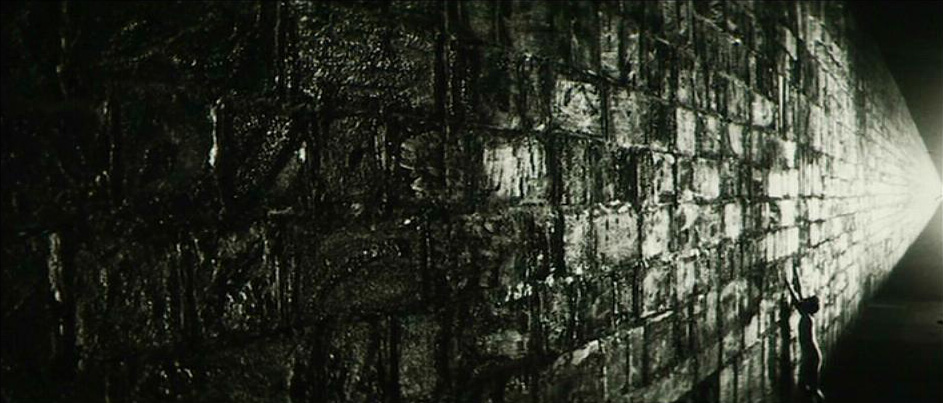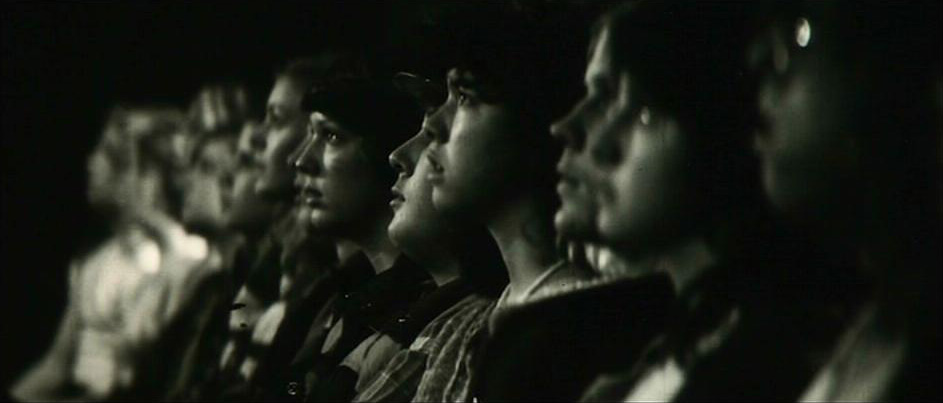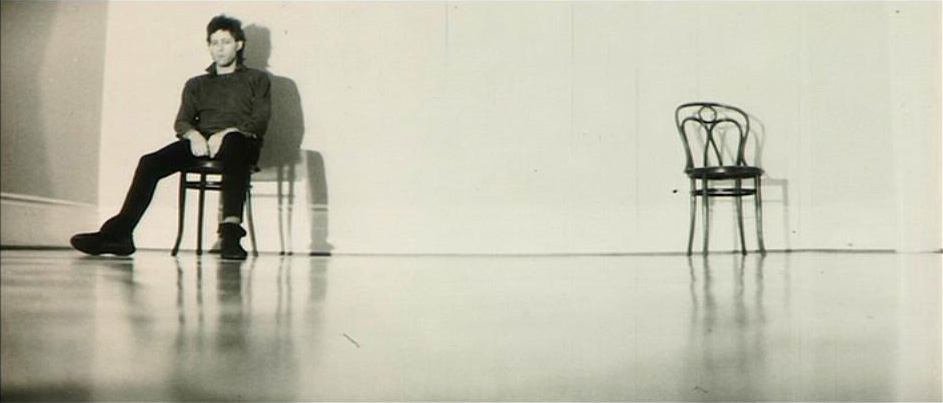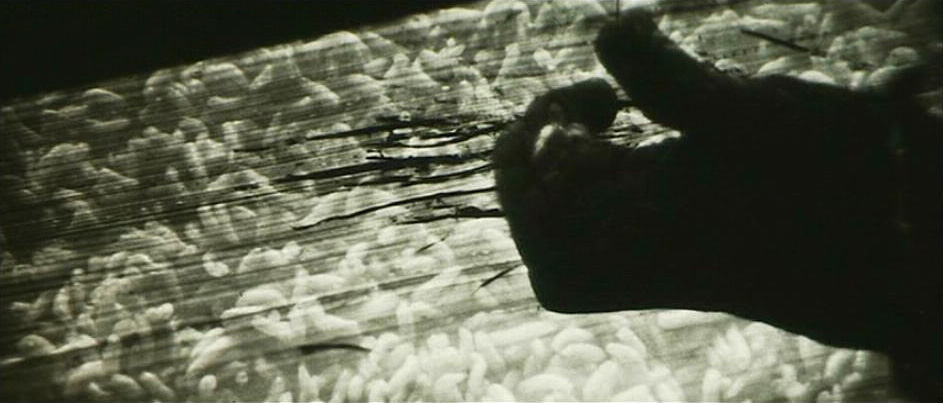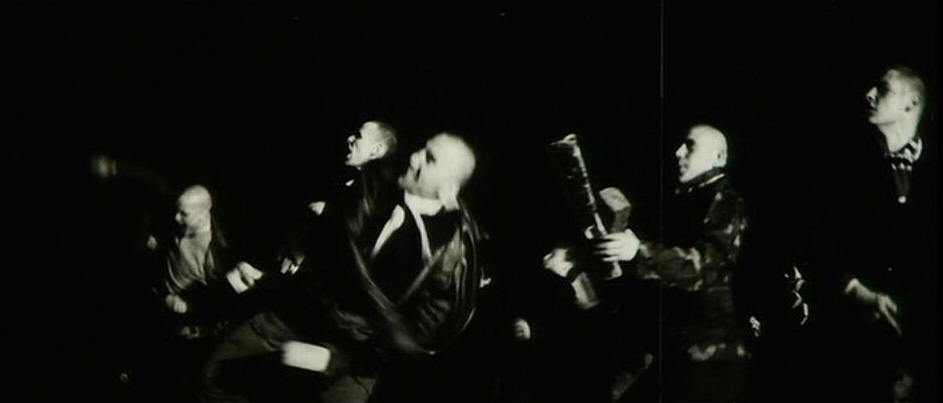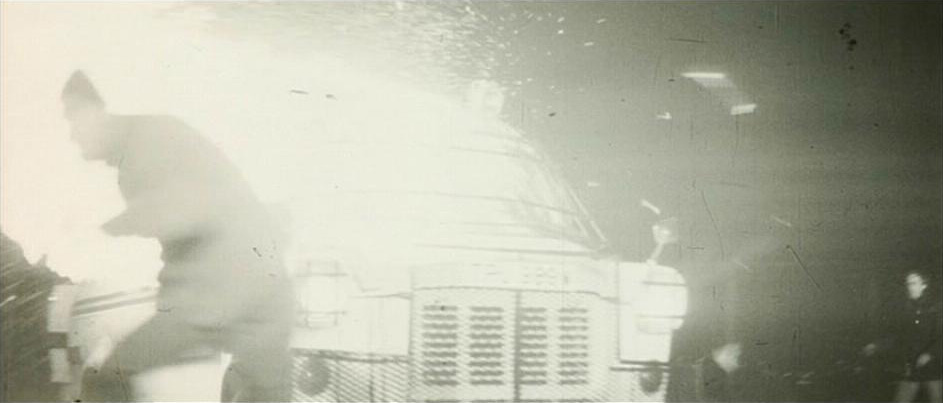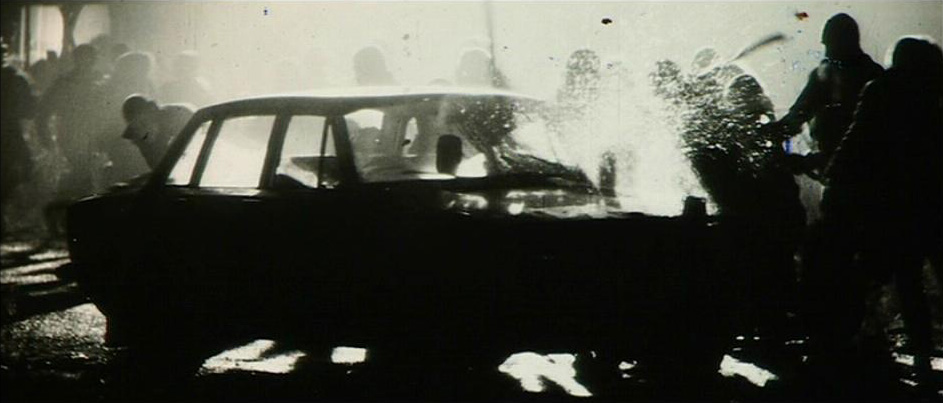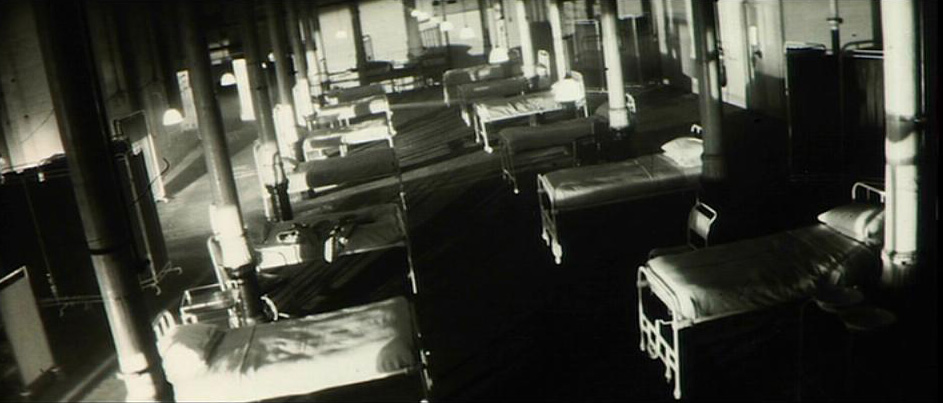Hey You
[David Gilmour]Hey you, out there in the cold
Getting lonely, getting old, can you feel me?
Hey you, standing in the aisles
With itchy feet and fading smiles, can you feel me?
Hey you, don't help them to bury the light
Don't give in without a fight.
Hey you, out there on your own
Sitting naked by the phone, would you touch me?
Hey you, with you ear against the wall
Waiting for someone to call out, would you touch me?
Hey you, would you help me to carry the stone?
Open your heart, I'm coming home.
[Roger Waters]
But it was only fantasy.
The wall was too high, as you can see.
No matter how he tried, he could not break free.
And the worms ate into his brain.
Hey you, out there on the road
Always doing what you're told, can you help me?
Hey you, out there beyond the wall,
Breaking bottles in the hall, can you help me?
Hey you, don't tell me there's no hope at all.
Together we stand, divided we fall.
Song In A Sentence:
Immediately after finishing his wall, Pink begins to wonder (too little, too late) whether he’s made the right decision in completely isolating himself from the world.
L ike “Another Brick in the Wall, Part 2” and “Comfortably Numb,” “Hey You” is played so much on classic rock radio stations across the globe that its context within the album is often a secondary point if not altogether forgotten. For some, the song is a perfect introduction to the album’s second half, rehashing the larger themes at play in the first half. Others argue that, great song though it is, it’s more than a little out of place on the album both narratively and thematically, and that the movie got it right in excising it completely. But more on this in a minute.
The story recommences with the well-known delicate riff played on a reverb-laden twelve-string guitar, the haunting echoes of a singular guitar riff mirroring the expansive void of Pink’s inner world after the completion of his wall. While “In the Flesh?” announced Pink’s birth into life (and into the album) with thundering drums and wailing guitars, our hero’s (or anti-hero’s) delivery into his new, disassociated world is heralded with far less fanfare. A fretless bass finally joins the lone guitar before giving way to Pink’s solitary voice, at long last alone behind his wall. Paralleling his sudden realization of his expansive surroundings, the music rarely shifts out of its subdued tone, only breaking free once in the middle at the onslaught of another of Gilmour’s fiery guitar solos before falling back to the same searching riff of the twelve-string guitar.
While haunting in and of themselves, most of the lyrics are fairly straightforward, possibly accounting for the song’s popularity even among non-Pink Floyd fans. In his 1979 interview promoting the album, Roger Waters stated that narratively and lyrically speaking, Pink is “behind the wall a.) symbolically, and b.) he’s locked in a hotel room, with a broken window that looks onto the freeway.” Trapped behind a colossal structure made from the pain and repressed emotions of his life, Pink seemingly searches in desperation for anything that will help him reconnect with the world he’s just left behind, be it a way out or simply a person on the other side willing to listen. Accordingly, most of the song’s lyrics reflect this search. Although apparently taking a step in the right direction psychologically in turning to the outside world for help (even if it is too late), Pink still projects a certain nihilism onto the very world and people whose help he seeks. In the first line he asks for support from “lonely” people who are living in a “cold” world, a state ironically paralleling his own. Next he addresses those who are slowly HeyYou2realizing the reality of life behind their “fading smiles,” (coupled with the “aisles,” this is a possible reference to his own concert-goers eager for the show), a line that is reminiscent of the cynical life-lessons of “In The Flesh?” and “The Thin Ice.” A few lines down Pink cries out to one “sitting naked by the phone” and one with “your ear against the wall.” Again, both lines are implicative of Pink’s personal predicament, recalling his earlier attempts to phone his adulterous wife and, even now, ostensibly sitting with his own ear to the wall “waiting for someone to call out” and rescue him. Even in his attempts to reach out, Pink unwittingly reverts back to his former egotism by projecting himself onto the world around him. Furthermore, his cries for someone to “feel” and “touch” him are all the more paradoxical considering that these are the very things Pink was unable to do in his life. He built his wall out of the fear of feeling something, out of his paranoia of being emotionally touched and leaving himself vulnerable. Such hypocrisy further delineates Pink as more an anti-Christ figure. While literary Christ figures tend to exemplify the golden rule of doing “unto others as you would have others do unto you,” Pink pleads for others to do unto him what he has hitherto been unwilling to do for others. Yet the irony is lost on him as he continues to cast himself in a quasi-messianic role, asking those who are listening to not “help them to bury the light,” a phrase that takes on Christ-like significance when read in conjunction with certain New Testament passages either comparing Jesus to the light of the world (John 8:12) or teaching followers not to hide one’s light under a bushel (Matthew 5:14-15). Even if not a direct religious allusion, light is certainly a literary one used in much the same sense as it is in the above mentioned chapter and verse from the Book of Matthew, acting as a metaphor for truth throughout most of the world’s literature. While Pink never specifically mentions what truth he is refering to in “the light” (the light of individuality? the light of human connectedness?), it’s hard to believe that he would know what Truth / Light truly looks like after being being blinded by his own misery and self-proclaimed martyrdom for so long. A slightly more optimistic view of these verses might strip away some of the irony and posit that in the shadow of his wall Pink has quickly realized the error of his ways. Likewise, depending on one’s view of our protagonist, Pink’s request for someone to help him carry HeyYou4″the stone” (a popular symbol of overwhelming burdens since the ancient Greek myth of Sisyphus) could be argued as either heartfelt or hypocritically narrow-sighted.
Just before launching into the guitar solo, Pink asks for the unnamed listener (his wife? the world outside his hotel room? us?) to “open your heart, I’m coming home,” once again asking those outside the wall to do what he never could. Later in “the Trial,” Pink’s mother accuses him of leaving her, while his wife accuses him of shutting her out of his life by going “your own way.” Yet at the moment he feels the most danger of being consumed by his own creation, Pink longs for someone to open their heart to him, he longs for “home,” ignorant to that which has been in front of him all along. As earlier, one can interpret the lyric both ways, either in terms of sincere remorse and insular egotism. One might further interpret this last line before the guitar solo in a literal fashion, with Pink longing to return to either the watchful care of his mother in his childhood home or to return back home to his wife. Another reading might view “home” by a more metaphorical light, thinking that Pink wishes to regress back to his childhood, back to where it all began, so that he might start over and see where things went wrong. Such a reading is based largely on the idea that one can only progress by learning from the past. For Pink to progress, he must first regress and comprehend the people, the events, and most importantly the decisions that have lead to his current entombment behind his wall.
In response to his desire to return to his origins, the guitar solo ignites, recalling previous solos reflecting Pink’s emotional outbursts in his search for self. Like the solo in “Another Brick in the Wall Part 2” or “Mother,” the lead guitar in “Hey You” musically conveys Pink’s frenzied realizations of his separation from the world. Yet equally important is the rhythm guitar in the background revisiting the musical theme begun in “In The Flesh?” and repeated throughout many songs on the album. Just as the guitar solo reflects Pink’s ongoing search for self, the rhythm guitar might be said to mirror his attempts to rediscover his origins by literally returning to the musical theme that conveyed his life’s beginning, the album’s start. On the flipside, the three-note rhythm – present in some form or another during the creation of many of his bricks – might represent the wall itself, hemming in that frantically searching guitar solo.
The tone of the song shifts when Roger Waters enters acting in the guise of…well, it’s hard to say for sure. Some might say that the lyrics of the bridge represent an omniscient narrator, or Life itself, or something akin to a Greek chorus, or maybe just another of the voices in Pink’s HeyYou5head. Whatever the character may be, Waters’ bridge summarizes the song – and to some extent the story – thus far, cynically commenting how Pink’s hope that someone on the other side of his “too high” wall could help him was “only fantasy.” The wall was fulfilling its role by keeping the outside out and the inside in, and as a result “the worms ate into his brain.” Though already mentioned in the movie analysis for “Another Brick In The Wall Part 3,” “Hey You” marks the worms’ lyrical introduction into the album. Roger Waters stated it best in his 1979 interview when he said, “[the worms] were my symbolic representation of decay.” Isolation leads to a sort of metaphorical death (“Goodbye Cruel World”) which in turn leads to decay on nearly all levels, be they physical, mental, spiritual, or emotional. In many ways the symbol of the worms is inseperable from that of the more expansive wall, with decay corrupting everything the bricks encompass. Aurally representing the teeming mass of metaphoric worms feeding on Pink’s decaying self, an incessant buzzing is superimposed over the haunting guitar riff leading into the third verse.
Though the listener is now aware that Pink’s cries are “only fantasy,” Pink himself is apparently unconscious of such, and continues to beg for someone to not only “touch” or “feel me” as he did in the first two verses, but now “help me.” What’s interesting here is that after his stint as the voice of Life / Omniscient Narrator / What-Have-You, Waters switches roles and finishes the song as Pink. Throughout the album, Gilmour and Waters have traded singing duties, though in almost every other song aside from “Hey You,” their vocals represent different characters or points of view. Take “Mother,” for instance, in which Waters sang in the guise of Pink, and Gilmour in the role of Mother (or at least Mother as imagined by Pink). Or later, in “Comfortably Numb,” when Waters acts as the doctor, and Gilmour as Pink. Here, however, both lead singers embody the same character, not counting Waters’ bridge lyrics. The reason for this is a bit unclear, though one could suggest that all the character voices thus far have been distilled through Pink’s imaginings anyway, and so “Hey You” is just a further clarification that the entirety of the album, though seemingly multi-voiced, is filtered through the point of view of one character. Or perhaps the switch has more to do with vocal style than anything else, with Gilmour’s mellifluous tone best suited for Pink’s initial plaintive HeyYou7pleas, and Waters’ more caustic delivery more in line with the character’s growing frenzy when help doesn’t arrive on the other side of his wall.
As if fighting his usual nihilistic urges, Pink goes on to plead for the unspecified “you” to not tell him “there’s no hope at all,” though judging by the frenzy in his voice, he knows that this is exactly the case. Continuing to pile irony on top of irony, Pink concludes – as if trying to win points with some cosmic judge – that “together we stand, divided we fall,” when, if anything, Pink has lived most of his life in the belief that together we fall and alone we stand…it’s the very basis of his wall. Almost to reiterate the hollowness of his final maxim, “we fall” is echoed over the last chords of the song, reverberating, as it were, through the void that Pink created out of his desire to stand alone. And yet there is a bit of genuine light in Pink’s final statement, the repetition of which can be interpreted as foreshadowing the eventual fate of the wall itself. While the “we” most readily applies to humanity in general, one could also apply the sentiment to the bricks themselves – divided they (the bricks) fall when together we (humanity) stand. Essentially, Pink has stumbled upon the solution to his problem, that key to tearing down his wall, though its utterance at this moment is arguably more an attempt to fool himself (or Life or God or Fate) of something that he won’t fully realize until the end of the album.
It was mentioned in the first paragraph that some Wall fans (myself included) are somewhat dissatisfied with the placement and/or inclusion of “Hey You” on the album. Early tracklisting for the album found “Hey You” following “Comfortably Numb,” with the second half of the album beginning with “Is There Anybody Out There?” Waters later recalled how producer Bob Ezrin didn’t feel right about the original pacing of the third side. “I thought about it,” Waters said, “and in a couple of minutes I realized that ‘Hey You’ could HeyYou9conceptually go anywhere, and it would make a much better side if we put it at the front of the side, and sandwiched the middle theatrical scene – with the guy in the hotel room – between an attempt to re-establish contact with the outside world, which is what ‘Hey You’ is” (Waters, 1979 Interview). The idea of “sandwiching” the theatrical scenes is certainly understandable, and musically “Hey You” flows seamlessly with “Is There Anybody Out There?” Yet despite Waters’ assertions to the contrary, many aren’t convinced that the song conceptually fits where it was ultimately placed. Going from the Pink in “Goodbye Cruel World,” who is resolute in his need for isolation, to the Pink in “Hey You”, who is suddenly hyper-aware of the error of his ways, is a bit too much of a conceptual leap for some. There has been no growth, no personal experience that would warrant such a sudden shift in his personality. Yet the narrative dissonance is further complicated with the succeeding “Is There Anybody Out There?” a tune which presents a Pink more in line with that of “Goodbye Cruel World” than “Hey You.” Although he does ask if there is “anybody out there,” his asking is still guarded and rife with paranoia, a far cry from the genuine / ironic pleading of “Hey You.” Simply put, Pink goes from vehement indifference (“Another Brick 3” / “Goodbye Cruel World”) to some sort of self-realization (“Hey You”) back to indifference (“Is There Anybody Out There” and to some extent, “Nobody Home), all in the space of three or four songs. That’s quite a bit of character seesawing. So while there’s no doubt that “Hey You” works quite well musically in its current position, many would argue that the overall narrative suffers from this emotionally disjointed back-and-forth, and that the song works much better, narratively speaking, in its original position after “Comfortably Numb.” (Not to mention that the reference to people “standing in the aisles” would make more sense when grouped in the context of the album’s second rock concert, that now depicted in “In the Flesh” through “Waiting for the Worms.”)
Sidestepping this issue altogether, the movie sequence for “Hey You” was completely cut from the final print of the film. Thankfully, the sequence is included on the DVD extras for the Wall, allowing us a chance to see just why the song was deleted in the first place. For the most part, the majority of the video sequences shot for each song advance the story in some degree, whether they further the actual narrative, provide a surreal counterpoint, or simply add depth to Pink’s splintering psyche. The footage for “Hey You,” however, accomplishes little if any of these, and at times is so heavy-handed that it feels as if it was HeyYou11lifted from some first year film student’s abstract movie project.
The sequence begins with a close up of the bricks in Pink’s wall before panning back to show Pink, nearly in the nude, clawing for a way out. Shift, then, to a slow pan over the blank faces of Pink’s concert-goers, each one alike in their vacant expressions. Though we never see Pink on stage, the implication is that he’s singing his pleas to the audience, to those “standing in the aisles” as mentioned above. Next, a panoramic shot of a row of empty infirmary beds such as those seen in World War II movies, followed by a long shot of two empty chairs set against a white wall. Pink fades into one chair, motionless, and after a short time, his nude wife fades into the other before turning to look at her motionless husband. The chairs, set at opposite sides of the wall, mirror the distance between Pink and the rest of the world, most notably his wife. Earlier sequences have already intimated Pink’s misogynist view of women, and the wife’s nude (ie, adulterous, promiscuous, etc.) appearance in “Hey You” is no exception. She fades out of the chair as Pink sings “I’m coming home,” a line that is followed with a quick shift to a car exploding. From there, a multitude of rioting scenes accompany the guitar solo, alternating between a crowd of mostly skinheads tipping over cars and throwing Molitov cocktails, to police adorned in full riot gear – nearly all shots that are used to convey Pink’s internal emotional war at various points throughout the movie.
As the narrative voice sings about Pink’s wall being too high, the scene shifts to a hand (presumably Pink’s) clawing at the inside of some entombing container, followed by a close up of seething maggots corresponding with the metaphorical worms eating into Pink’s brain. In a possible visual allusion to the 1971 anti-war film Johnny Got His Gun, we find Pink lying on one of the aforementioned hospital beds with electrodes attached to his head. Just as it appeared in the montage for “Another Brick in the Wall, Part 3,” a sequence that used much of the footage seen here, an image of Pink’s wife screaming is superimposed over shot before giving way to a close up of a fire started in the previously depicted riots. A barricade of marching policemen (again, a shot HeyYou12used in “Another Brick, Part 3”) is silhouetted against a raging fire, as another line of rioters throw flaming debris and form protective walls of mattresses and desks, calling to mind the impromptu bonfire from “Another Brick In the Wall, Part 2.” Like the wall itself, the imagined riots in Pink’s mind have grown from simple fantasy of childhood anarchy to nearly full-fledged war. Finally, the shot of marching policemen changes back to the beginning shot of Pink against his wall searching for a way out.
Being that the song essentially finishes where it starts, and all of the footage in between is either extraneous or put to better use in other songs like “Another Brick in the Wall, Part 3,” it seems that cutting “Hey You” from the film was the obvious choice. Relatively nothing is added to the narrative flow or to the viewer’s perceptions of Pink. “Goodbye Cruel World” showed Pink in this same symbolic posture against his wall, as does the beginning of “Is There Anybody Out There?” While the shots of the riot spark thoughts about Pink’s dichotomous sides and his own internal conflict (his rebellious “One of My Turns”-side warring against the more rational Pink that finally steps forward in “The Trial”), these scenes are made redundant by the very fact HeyYou10that they were used to make the exact same points in previous song sequences. Likewise, the somewhat important worm symbolism – something that will become more central later in the album – was already introduced in basically the same way earlier in the film. So while the song itself is a veritable classic, many fans feel that the same cannot be said for the footage, especially when viewed in context with the rest of the film. Which is perhaps why it was cut in the first place, allowing for a more harmonious bridge between Pink’s entombment in “Goodbye Cruel World” and his slow realization of the effects of such absolute disconnection in “Is There Anybody Out There?”
What Other Floydians Have Said
"If I may, I just wanted to share with you my views on the album placement of 'Hey You' and why I believe it is in the perfect location. 'Hey You' begins at the very moment the wall is sealed. Remember the last 'goodbye' in 'Goodbye Cruel World'? The music stops abruptly, as if the listener is standing outside the wall when the last little sliver is fitted and an air tight barrier is finished. No sound gets out...and no sound gets in. True silence is very difficult to achive in real life. There is ambient noise everywhere. Right now I can hear the hum of my PC, and even a lower hum of the lights in my kitchen. But when you can eliminate all that background noise, the silence is a palpable thing. The moment, the very instant that wall is sealed, Pink is struck by the very real weight of the true isolation he has created...and he's freaked out by it. This is first of four major realizations Pink makes and has a chance to reverse his slide into insanity. It strikes him that he has made a mistake and needs to get out, but he still has the same contempt / fear of those outside the wall. So he starts out with a little light hearted banter as a request, kind of an "ummm...hehe...I got a little problem here, can ya help me out?" The music is mellow. The cries for help civil. Then the 'life' voice (as you accurately put it) tells him (not us) that this is fantasy. This is Pink's sane subconscious coming to let him know he's really in a pickle. Pink's first revelation deepens "Oh hell, I'm really in trouble here". The drums kick in, and the singing becomes a howl. 'Hey you, out there on the road...' and to the end, Pink is screaming, horrified." - Jason Hamwey
"I recently obtained an original 1979 copy of 'The Wall' record...anyway I noticed that on the sleeve it lists ‘Hey You’ as coming after ‘Comfortably Numb.’ Considering this was its original placement on the album, it seems to put it in a different context. As far as the plot goes, this means that Pink has been injected by the doctor, but has yet to crack from it ('In the Flesh') or even have his moment to himself before he takes the stage ('The Show Must Go On'). I think in this context some of the lines in ‘Hey You’ may be more interesting, like those standing in the aisles probably are the concert goers since he is at or going to the venue. Also the ‘worms’ eating into his brain may be more literal because at this point in the plot he goes through his biggest decay." - Vincent Amendolare
"The interpretation of the worms as a symbol of decay throughout the second half of the album I believe is incomplete; if one notes how in the cartoon the teacher cranks out “worm-like” products from their grinder (symbolizing the “factory” idea of modern education), I would suggest this is also what Waters was thinking about when referring to the worms… the society that as a whole are products of this factory education. These are the “dogs” and “sheep” (a similar reference of the worms from Pink Floyd’s Animals) that simply do as they’re told or follow the “factory rails” of society (what’s expected of them). I think these worms are not only a source of Pink’s decay but also a source of reconciliation with society that Pink has to make to get back out into the real-world outside his wall… an “acceptance” of sort of society – as embodied by the judge in the trial. Pink must reconcile and accept his mother, his school-teacher, and even his wife as the key representations of his connection with society, not with contempt but with empathy and understanding. I believe the dictator persona and close-minded fascist period of Pink’s psychosis was instrumental in this realization in that it revealed to Pink the “extreme other side” of his mental debate – do I live in closed judgment of all different from myself or do I live in open acceptance of all and what is in society. I believe this is a question we all ask everyday and in all contexts throughout our own lives… at least I feel I do. - Kevin Owens



